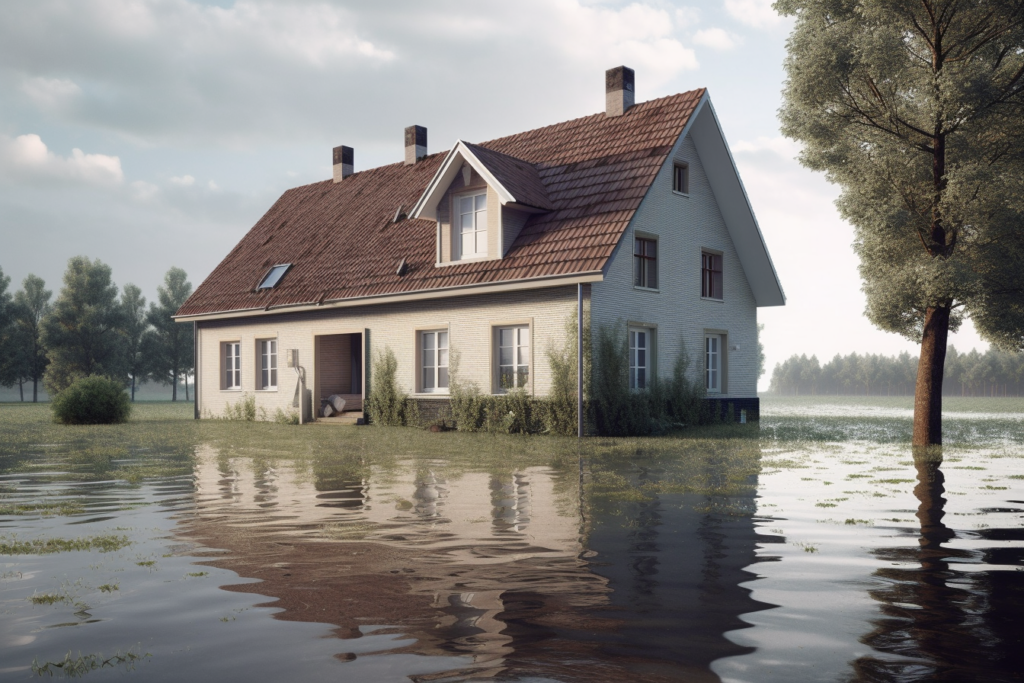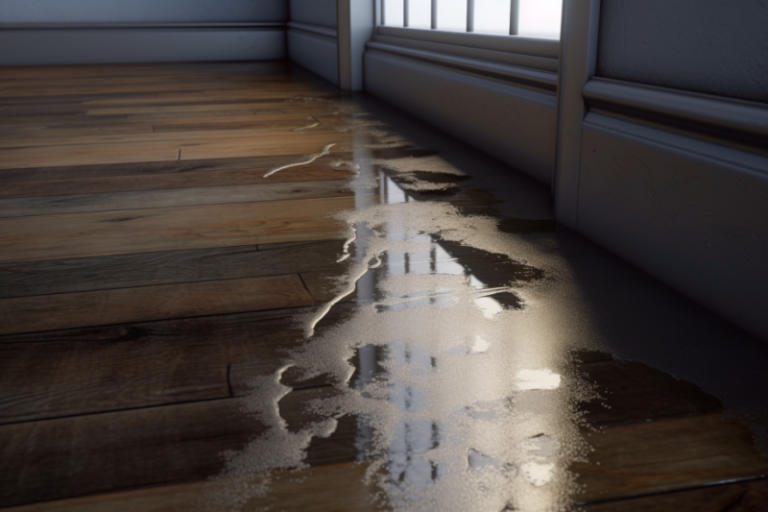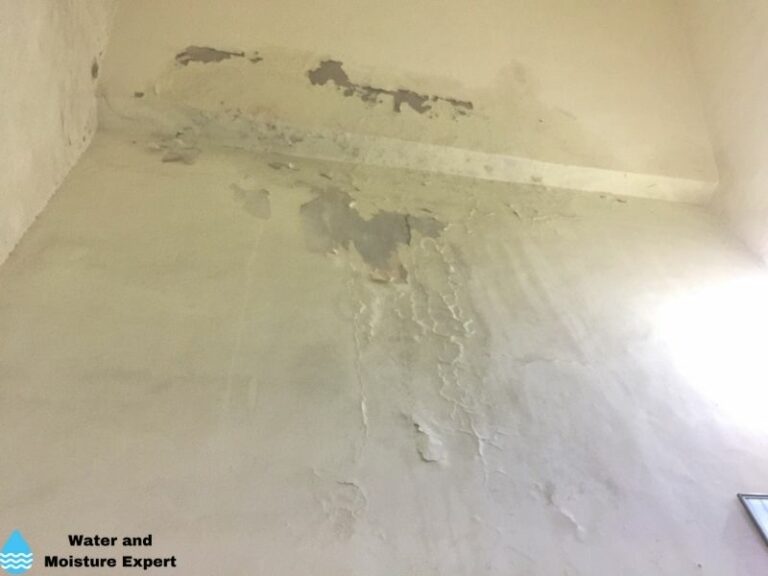What Are The Damages Caused By A Flood
Floods are one of the most disastrous natural calamities. They can cause significant damage to property and people’s lives. Understanding the damages caused by floods is crucial, and I can help you know the full extent of those damages.
What are the damages caused by a flood:
Floods are natural disasters that can cause significant damage to property and infrastructure and significantly impact the local economy, public health, and human life, resulting in long-term and short-term effects. Floodwater entering buildings can cause significant damage to infrastructure, appliances, and furniture. Floods can damage electrical systems, creating long-term issues such as fires and electrical problems. Floods can lead to the closure of businesses, decrease economic activities and affect job loss. Floods can also cause significant losses of life and environmental impacts, including pollution and changes in the landscape. Finally, it is essential to have a comprehensive flood preparedness plan to mitigate the effects of floods.
The impact of a flood can be devastating, leaving behind extensive damages that can cost billions of dollars.
From property damage to health risks, floods can affect entire communities. Keep reading to learn more about the damages caused by this natural disaster.

Contents
- 1 Assessing the Adverse Effects of Floods: A Comprehensive Overview.
- 2 What are the potential consequences of a flood?
- 3 ‘Exploring the Adverse Impacts: A Comprehensive Look into the Five Negative Effects of Flooding’
- 4 Do Floods Cause the Most Damage?
Assessing the Adverse Effects of Floods: A Comprehensive Overview.
Floods are natural disasters that can cause significant damage to infrastructure and human life.
They occur when large amounts of water accumulate in an area, either due to heavy rainfall or other external factors. Floods can happen anywhere and at any time.
They don’t discriminate; anyone can fall victim to their devastating effects. The damages caused by floods are significant and can have both short-term and long-term effects.
• Damages to Property
One of the primary damages caused by floods is to property. When floodwater enters houses, offices, or other buildings, it can cause significant damage to the infrastructure.
Flooding can damage floors, walls, and even the foundation of a building. It can also ruin any furniture and appliances in the flooded areas.
Floodwater can have a damaging effect on electrical systems in buildings, which can lead to long-term issues such as fires and electrical problems.
In some cases, the damage caused by floods can leave buildings uninhabitable, leading to expensive repairs or even complete losses.
• Economic Losses
Floods can also have a significant impact on the local economy. The damages caused by floods can result in the closure of businesses or damage to commercial properties.
The loss of revenue from these closures can lead to economic losses to the affected area, and it can take months or years to recover from the damages.
In some cases, the damage caused by floods can lead to job losses. The loss of jobs in an area affected by floods can lead to a decrease in economic activity, which can further exacerbate the economic impact of the disaster.
• Loss of Life
Floods can also cause significant losses of life. When floodwater rises rapidly, people can become trapped in their homes or vehicles, leading to fatalities.
In some cases, the power of the water can sweep people away, leading to drowning or other injuries.
Another factor that can lead to a loss of life during floods is the damage caused to infrastructure such as bridges and roads.
The destruction of these structures can lead to traffic accidents, causing more fatalities.
• Environmental Damage
Floods can also have environmental impacts. The floodwater can wash away soil and create deposits of silt and other materials.
This process can change the landscape of the affected area, leading to long-term environmental damage. Pollution can also occur during floods as contaminants are carried by the water and deposited in new areas.
This can pollute water sources, leading to further environmental damage.
• Public Health Risks
Another danger that comes with floods is public health risks. Floodwater can be contaminated with sewage, chemicals, and other harmful substances.
This contaminated water can lead to the spread of diseases, leading to public health risks.
In addition to the dangers of contaminated water, floods can also lead to the displacement of people.
When people are forced to flee their homes, they can become exposed to other public health risks, such as overcrowding and poor living conditions.
Category of Damage | Description |
|---|---|
Structural Damage | Damage to buildings, roads, and other structures due to the force of floodwaters. This includes foundation damage, cracked walls, and collapsed roofs. |
Contamination | Floodwaters can contain dangerous contaminants such as chemicals, sewage, and bacteria that can cause health problems and environmental damage. |
Property Damage | Floodwaters can damage personal property such as furniture, clothing, and electronics. This can lead to the loss of personal belongings and financial hardship. |
Erosion | Floodwaters can cause erosion of riverbanks and coastlines, which can destabilize infrastructure and cause property damage. |
Displacement of People | Floods can force people to evacuate their homes and communities, causing displacement and emotional distress. |
Economic Loss | Floods can cause economic losses by damaging businesses, disrupting transportation, and impacting agriculture. |
What are the potential consequences of a flood?
Floods are natural disasters that occur when water overflows from rivers, lakes, or oceans and cannot be contained within their natural boundaries.
Floods can occur suddenly as flash floods or in slow motion as rising waters. Regardless of how they occur, the damage done by floods can be catastrophic.
Floods are one of the most common natural disasters globally, and the damage they cause can be severe and costly.
• Damage to Humans and Animals
One of the primary concerns during a flood is the safety of humans and animals. Floods can cause severe injury or death.
People can get swept away by the rushing water or become trapped in floodwaters. Animals are not exempt from the dangerous effects of floods either.
Domestic animals can drown or become stranded without food or water. Wildlife can become displaced or faced with extinction.
• Property Damage
The damage that floods cause to properties can be devastating. In an instant, households can be destroyed, and significant infrastructures can crumble.
Floodwaters can damage electrical systems, heating systems, and gas lines, leading to explosions or fires. Additionally, water can carry debris and contaminants that can cause further damage to structures.
Another consequence of property destruction caused by floods is the displacement of people. When people lose their homes, they must find somewhere else to live.
This can be a long-term issue, which can lead to homelessness and other problems if not addressed quickly.
• Consequences on the Economy
Floods can also have a significant impact on local economics. Property damage can lead to lost or closed businesses, lost jobs, and economic instability.
In addition, municipalities may need to spend a great deal of money to repair public infrastructure, like roads, bridges, and sewers, that are critical to a functioning economy.
• Environmental Damage
Floods leave significant environmental damage, including the loss of habitats, farmlands, and forests. Floodwaters carry pollutants and toxins that can contaminate soil and water sources.
This pollution can have effects felt for years to come, such as reduced water quality, the death of wildlife, and even human health issues.
• Preparing for Floods
Preparing for flood disasters can help mitigate the damages caused by floods. The best way to prepare is by understanding your risks and developing a comprehensive flood plan in advance.
A flood plan can help people take immediate and effective action based on the severity of the flood. FEMA’s website provides detailed information on how to make a flood plan for your family.
It is also essential to know your community’s flood evacuation routes and identify areas of high ground to seek refuge in times of need.
Local or state public works departments maintain and update the lists of designated shelters and evacuation routes people can access.
‘Exploring the Adverse Impacts: A Comprehensive Look into the Five Negative Effects of Flooding’
Floods are one of the most devastating natural disasters that can occur anywhere in the world.
When the water levels in rivers, lakes, and oceans rise beyond their usual boundaries, it can cause immediate and long-term damage to the environment and the communities that inhabit them.
• 1. Destruction of Property
Floods can cause extensive damage to homes, buildings, and infrastructure.
The force of the water can wash away buildings and cars, collapse bridges and roads, and leave behind debris that can create hazardous conditions for residents.
The cost of repairing or replacing damaged structures and possessions can be staggering, leaving many families unable to recover from the financial impact of the flood.
To prevent property damage, it’s crucial to create early warning systems to detect rising water levels and alert residents of impending danger.
Additionally, constructing buildings and infrastructure using resilient materials and techniques can help mitigate flood damage.
• 2. Loss of Life
One of the most tragic consequences of flooding is the loss of human life. Floods can be unpredictable, and the rapid rise of floodwater can catch people off guard, leaving them vulnerable to drowning and other water-related hazards.
People who live in low-lying areas or near waterways are particularly susceptible to flood-related fatalities.
Individuals and communities can take steps to prevent loss of life by creating and regularly updating emergency preparedness plans.
These plans can include the identification of evacuation routes and the establishment of safe meeting places.
• 3. Contamination of Water Supply
In addition to direct damage to property and life, floods can contaminate water supplies, posing a risk to public health.
As floodwater comes into contact with sewage and other pollutants, it can carry harmful bacteria and viruses that can cause illness and disease.
It’s crucial to monitor the quality of local water supplies following a flood event and take appropriate measures to ensure drinking water and runoff are safe for human consumption.
Efforts to bolster local water infrastructure, including developing new treatment facilities and promoting water conservation measures, can also help mitigate the risk of contamination.
• 4. Damage to Agriculture
Floods can also have a significant impact on agricultural production. Excessive rainfall and standing water can damage crops, destroy livestock, and disrupt the supply chain of food and other essential agricultural products.
This can ripple effect on local economies and communities, exacerbating the economic impact of a flood event.
Efforts to mitigate flooding-related agricultural damage can include establishing alternative crop production methods, building agricultural structures that can withstand flood conditions, and creating new supply chain networks to help support local farmers and communities.
• 5. Environmental Damage
Finally, floods can extensively impact the environment, damaging ecosystems, and fragile habitats. Floodwaters can destroy wetlands and other critical habitats, creating long-lasting damage to local ecosystems that can take years to recover.
The loss of these habitats can also contribute to a decline in biodiversity and the loss of animal and plant species.
Efforts to protect the environment in the face of flood damage can include the development of comprehensive restoration and rehabilitation programs, the use of green infrastructure practices to improve water management, and the creation of protected areas that can help prevent future environmental damage.
Effect | Description |
|---|---|
Loss of life | People can drown or be killed by debris and floating objects in floodwaters. |
Damage to property and infrastructure | Floodwaters can destroy homes, buildings, roads, bridges, and other man-made structures. |
Contamination of water and soil | During floods, sewage systems can overflow, causing water and soil to be contaminated with harmful bacteria and other pollutants. |
Spread of disease | Disruption of the economy and society |
Disruption of economy and society | Floods can disrupt transportation, commercial activities, and everyday life, causing significant economic and social impacts on communities. |
Do Floods Cause the Most Damage?
The world is prone to natural disasters, and floods are among the most common and devastating disasters.
Floods occur when there is an excessive amount of water in a specific area, leading to overflowing rivers, lakes, or oceans.
These natural hazards have affected millions of people worldwide and are responsible for massive economic losses. But do floods cause the most damage compared to other natural disasters?
• The Destructive Power of Floods
Various natural factors can cause floods. Heavy rainfall, storm surges, and tsunamis are just a few examples of what can cause flooding.
When there is more water than the land or infrastructure can handle, it will overflow, causing significant damage.
Floods can affect both rural and urban areas, with cities experiencing greater damage due to the concentration of infrastructure and people in one place.
Floods can wash away roads, bridges, and railway tracks and damage buildings, homes, and other structures. They can also contaminate water sources and cause power outages, leaving people stranded and vulnerable.
According to a report by the United Nations, floods cause the most damage compared to other natural disasters.
Between 2000 and 2019, floods accounted for over 40% of global $3 trillion natural disaster losses. In 2019 alone, flooding caused over $20 billion in damage worldwide.
• The Effects of Floods on People and the Environment
Floods can have severe effects on people and the environment. They lead to loss of life, displacement of people, and damage to property and infrastructure.
Floods can also cause soil erosion, deforestation, and the disruption of wildlife habitats.
The destruction of crops and farmlands can lead to food shortages, pushing communities into famine.
Floods can also lead to waterborne illnesses, increased risk of disease due to lack of sanitation, and the spread of insect-borne diseases.
The ensuing debris and mud carry contaminants, leading to contaminated water sources, further leading to health risks for people and wildlife.
Communities living in areas prone to flash floods, which occur suddenly, can be vulnerable because of the lack of time to prepare or evacuate.
These communities typically do not have access to early warning systems or have poor infrastructure at the risk of being washed away.
• Are Floods the Most Destructive Natural Disasters?
While floods cause significant damage, it is essential to understand that they are not the only natural disasters that can affect people and infrastructure.
Other natural disasters, such as earthquakes, tsunamis, wildfires, and hurricanes, can also cause tremendous destruction and loss of life.
Earthquakes, for example, can cause widespread destruction and damage to buildings, bridges, and infrastructure.
The 2010 Haiti earthquake caused over 200,000 deaths and left 1.5 million people homeless. Conversely, wildfires can destroy millions of hectares of forest, homes, and other structures, leaving people, animals, and the environment vulnerable.
Despite being less frequent than floods, hurricanes, and cyclones, when they occur, can cause significant damage to the infrastructure and the environment.
Hurricane Katrina, which struck New Orleans, USA, in 2005, caused massive flooding, and devastated the city’s infrastructure, and left over 1,800 people dead.
• What is Flood Damage?
Flood damage is the destruction caused by water that has entered areas where it is not wanted. Floods can be caused by natural disasters, such as heavy rainfall or hurricanes, or man-made events, such as a burst pipe or a dam break.
Regardless of the cause, floods can cause extensive damage to homes, businesses, and infrastructure.
• Facts About Flood Damage
– 1. Flooding is the most common natural disaster in the United States
According to the National Flood Insurance Program, flooding is the most common natural disaster in the United States.
Between 2008 and 2012, the average amount of flood claims paid out was almost $42,000 per claim. Floods can happen anywhere, and almost everyone is at risk of experiencing flood damage.
– 2. Flood damage can be costly
Not only can flood damage be emotionally devastating, but it can also be financially devastating.
Flood damage can cause structural damage to homes and businesses, leading to expensive repairs. Personal belongings like furniture and electronics can also be damaged beyond repair.
Flood damage is not typically covered by standard homeowners or renters insurance policies, meaning individuals must purchase separate flood insurance policies.
– 3. Mold can be a serious issue
One of the most significant risks associated with flood damage is mold growth. Flooded areas are damp and humid, providing the perfect environment for mold to grow.
Mold can cause respiratory issues and other health problems and can also cause further damage to the structure of the building.
– 4. Electricity and appliances can be dangerous
If flooding occurs in a home or business, turning off the electricity immediately is essential. Water is a conductor of electricity, and appliances that have come into contact with water can be dangerous, even if they appear to function normally.
It is important to have a professional check on all appliances to ensure they are safe to use.
– 5. Prompt action is crucial
When it comes to flood damage, time is of the essence. The longer the water sits, the more damage it can cause.
It is important to contact a professional flood damage restoration company as soon as possible to begin the drying process and prevent further damage.
• Recommendations from an Expert
As an expert in flood damage restoration, I strongly recommend that individuals take proactive steps to reduce their risk of flood damage.
Here are a few tips that can help:
- Purchase flood insurance: It is necessary to purchase separate flood insurance policies, as standard homeowners and renters insurance policies do not typically cover flood damage.
- Keep gutters clean: Regularly cleaning gutters can help prevent water from pooling around the foundation of a home, reducing the risk of flooding.
- Install a sump pump: A sump pump can help prevent flooding by removing water from a home’s basement.
- Elevate appliances: Elevating appliances such as hot water tanks and washing machines can help prevent damage if flooding occurs.
- Have a plan in place: Knowing what to do in the event of a flood can help minimize the damage. Having a plan in place and knowing how to turn off the electricity and evacuate the home can make a big difference.
If flood damage occurs, it is important to contact a professional restoration company as soon as possible.
These professionals have the equipment and expertise needed to safely and effectively dry out flooded areas and prevent further damage.
• Conclusion
Flood damage can be devastating, but taking proactive steps to reduce the risk of flooding and knowing what to do in the event of a flood can help minimize the damage.
As an expert in flood damage restoration, I strongly recommend that individuals purchase flood insurance, keep gutters clean, install a sump pump, elevate appliances, and have a plan in place.
And if flood damage does occur, it is crucial to contact a professional restoration company as soon as possible to begin the drying process and prevent further damage.
For more information on flood damage and how to reduce the risk of flooding, visit the Federal Emergency Management Agency’s website at www.fema.gov.
Fact | Description |
|---|---|
1 | Floods can happen anywhere and at any time. |
2 | Flood damage can significantly impact the value of a property. |
3 | Preventing flood damage through proper maintenance can save homeowners money and prevent future damage by preventing flood damage. |
4 | Flood damage can lead to mold growth, which can cause health problems. |
5 | Flood insurance is not included in most standard homeowner’s insurance policies and must be purchased separately. |





